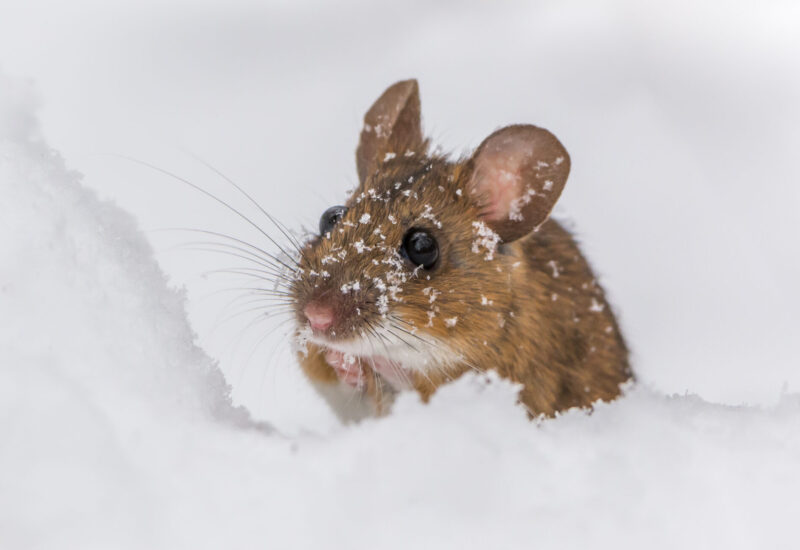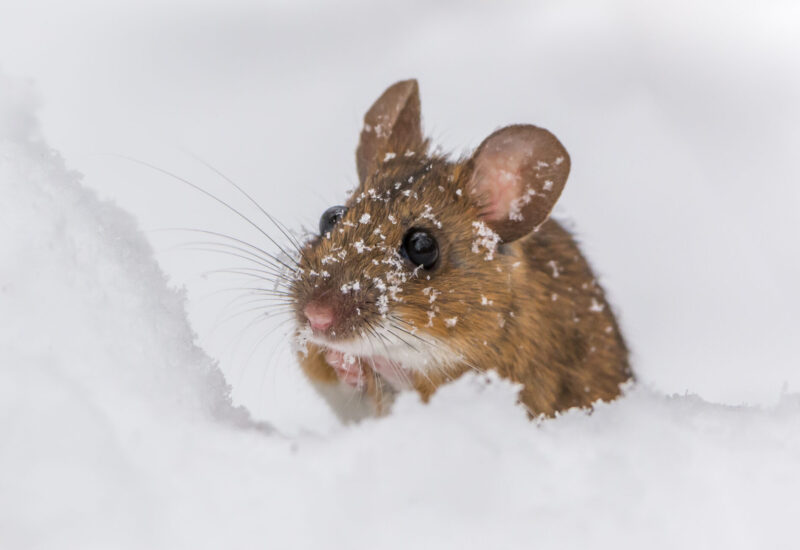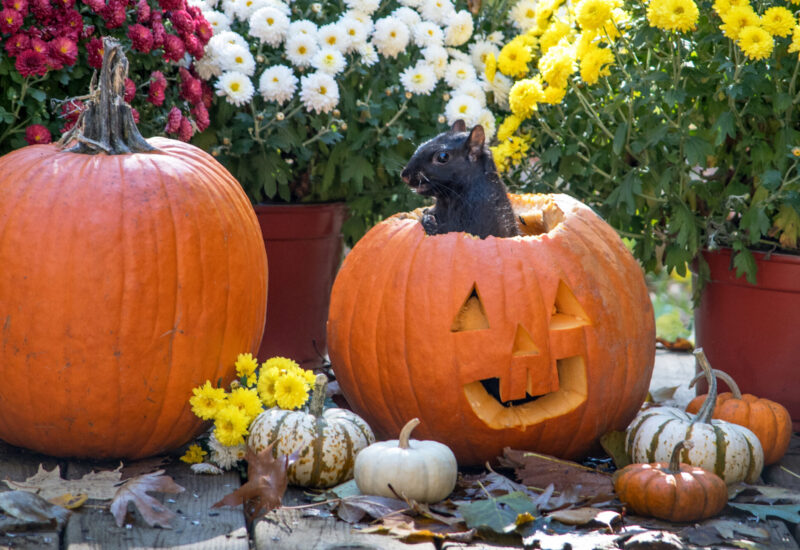Prevent Squirrel Damage

Squirrel Damage to Homes & Businesses Can Become Quite Costly & Unsightly Quickly
Squirrels will go to great lengths for food, shelter, and a safe place to build a nest.
With changes in weather occurring, squirrels and other wildlife will try to move into your house, office building, or other structure.
Squirrel damage to a house can be quite costly as their gnawing can damage the home itself or the wiring, which makes squirrel and wildlife prevention essential.
So, how can we stop this from happening?
The first step is educating yourself on squirrels, their behavior, and their habits and tendencies.
How Do Squirrels Get in Your House?
Some species of this outdoor rodent, like Eastern gray squirrels and flying squirrels, will most frequently enter your home by squeezing through gable vents, soffits, and dislodged siding.
Red squirrels will typically use entry points that are closer to ground level, like under siding and through stone foundations.
Squirrels will chew and claw preexisting openings to make it large enough to fit through and enter the building. Creating a larger opening for themselves is a mere glimpse at the damage caused by squirrels.
Red squirrels need an opening that is roughly the size of a half dollar while grey squirrels need an opening that is slightly larger — about the size of a racket ball. A hole the size of a quarter is all it takes for a flying squirrel to sneak inside.
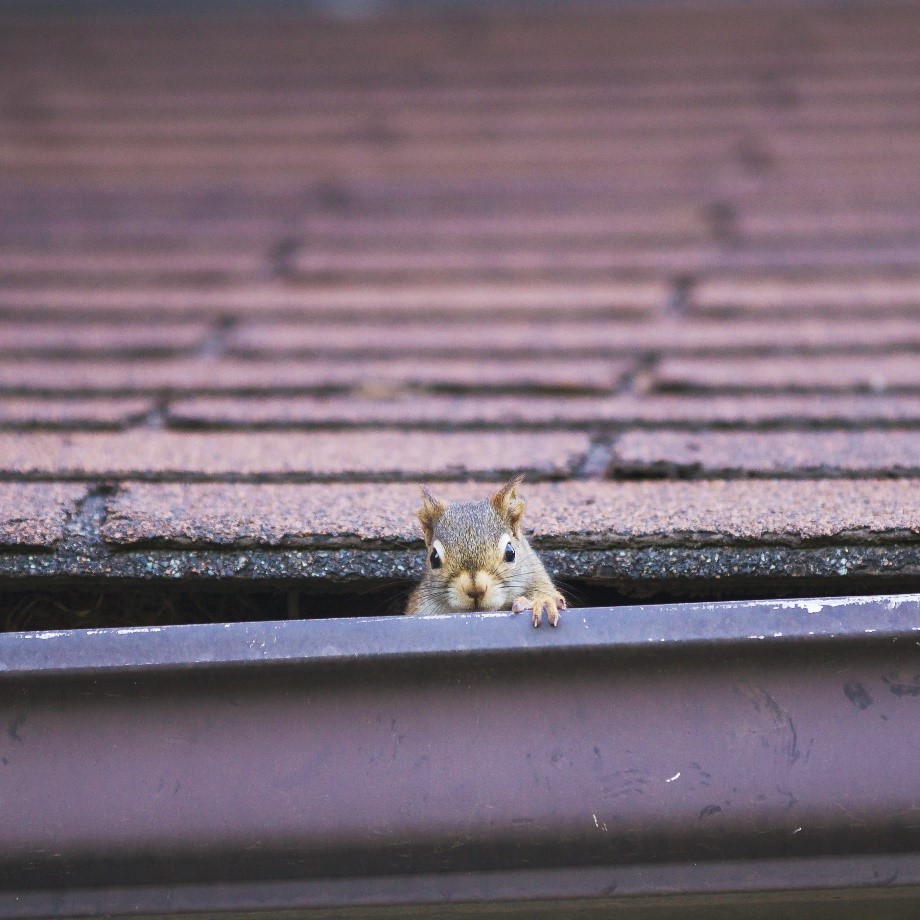
Damage Caused by Squirrels in The Home & Attic
Once a squirrel has found a way into an attic, basement, wall, or crawlspace, it will look for an area to build their nest as well as a food source.
To build their nest, squirrels will tear up insulation and walls. Squirrels will chew on objects ranging from garden hoses to electrical wires and branches to build a suitable nest for their kits.
Squirrel damage to a house isn’t the only area that is a cause for concern.
Squirrels can also carry an array of diseases which can be spread to humans and pets. These diseases make professional wildlife and squirrel removal essential for every homeowner and business owner.
Leptospirosis can be transmitted when squirrel urine comes into contact with open cuts, scratches, or wounds. If left untreated, it can lead to kidney failure or meningitis.
Lyme disease isn’t always spread through a squirrel bite, the disease can be spread by ticks found on the rodent. If left untreated, it can cause facial palsy, arthritis, and heart palpitations.
While it’s a rare occurrence, the spread of rabies from squirrels is a concern. If bitten by a squirrel with rabies, the disease can lead to insomnia, confusion, and paralysis. It can potentially be fatal as well.
How to Protect Your Home & Business from Squirrels
Use these tips from our pest and wildlife professionals to save your home or business from squirrels and to keep wildlife where they belong — outside.
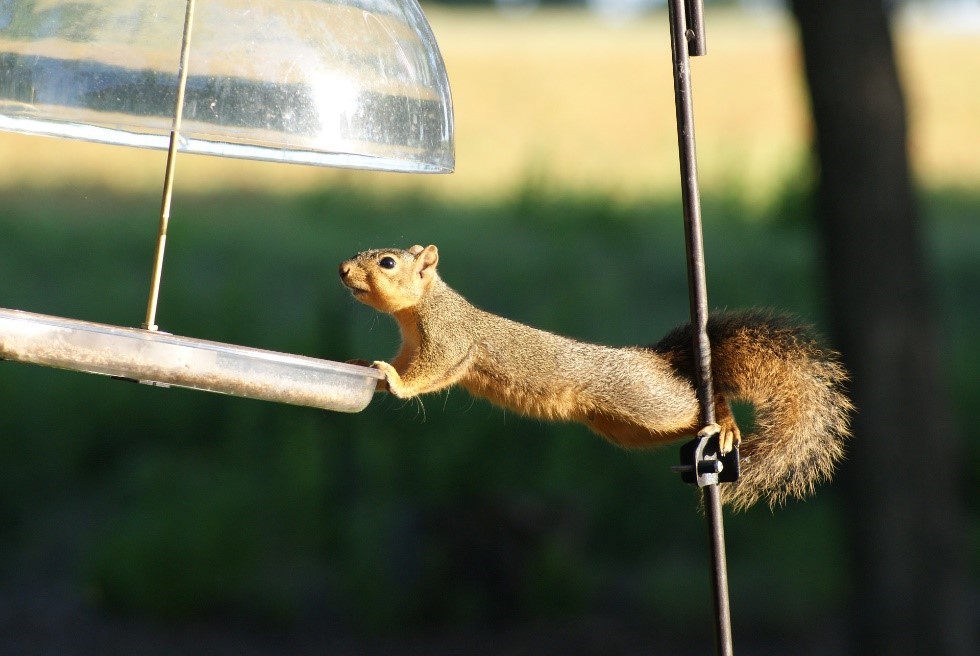
- Routine Maintenance: Repair cracks and crevices along your foundation and replace rotting or damaged siding, soffit, and fascia.
- Move the Bird Feeder: Bird feeders can be enticing to squirrels and could cause them to decide to move into your home or other structures. Move bird feeders at least 30 feet away from your home or business to deter squirrels and other wildlife from moving in.
- Landscape Maintenance: Trim back shrubs and tree branches. Overgrown vegetation makes it easier for squirrels to hide and access your home.
- Eliminate Food Sources: Keep outdoor garbage cans covered as food scraps can attract squirrels. Eliminating this easy access to food encourages squirrel and other wildlife to look elsewhere for their next meal.
- Wildlife Exclusion: Squirrel removal is just one part of the process. It’s imperative to prevent them from accessing your home or office in the future. Protect your home against squirrel and wildlife entry. Permanent pest and wildlife exclusion methods, like Catseye Pest Control’s Cat-Guard Exclusion Systems, protect homes and businesses from nuisance wildlife. And it’s environmentally friendly!
For more tips to protect your home, office, and other structures contact our pest and wildlife professionals today.


